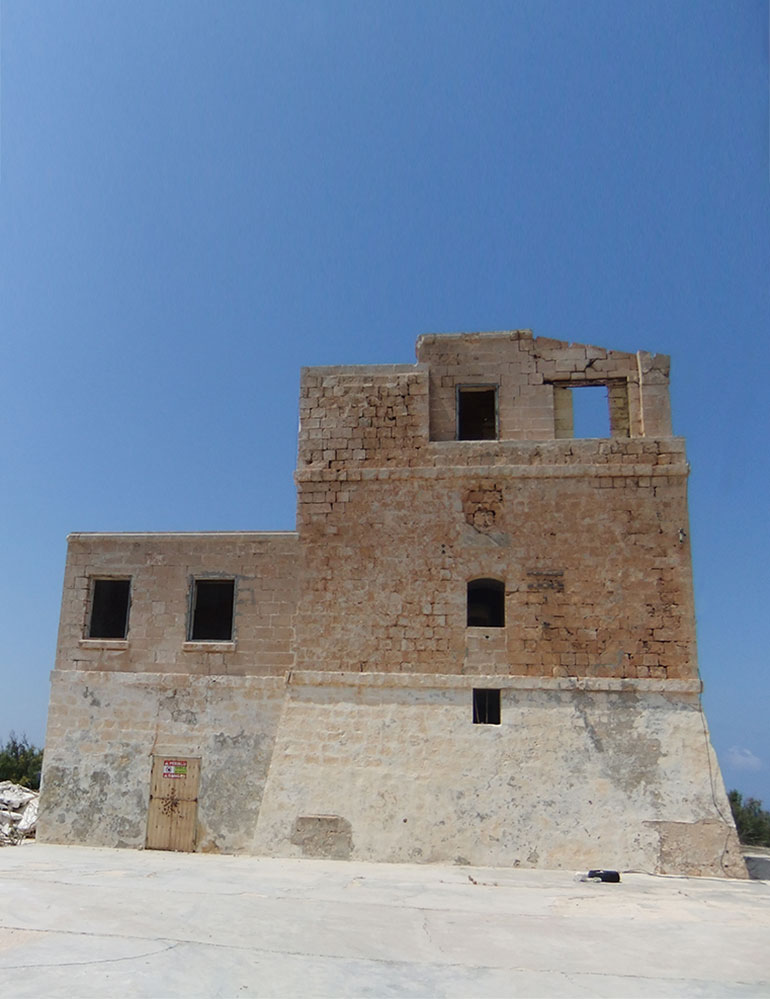L-Ahrax Tower
L-Ahrax Tower was one of those thirteen coastal towers built around Malta by Grand Master De Redin in the mid 17th century. This tower was the sixth one built in this system of coastal towers. The intention was to sound alarm in case of sighting an enemy fleet or an enemy force disembarking troops in a particular bay/s. This was the third tower to be built in Mellieha village after the building of Ghajn Tuffieha Tower in 1637 and the Red Tower or Fort St. Agatha in 1648.
The White Tower was erected in 1658 and the total cost was 589 scudi, 5 tari and 15 gramm, which was quite a large sum for that period. It has a square shape and consists of two rooms on each other and a little one on the roof. In the past years a number of alterations were made on it. It was used as a place to store a number of muskets for the Naxxar country militia which had the responsibility for defending the northern most part of Malta.2 The militia was paid by the Universita of Imdina. L-Ahrax Tower was manned, like the other de Redin towers, by four men, who were paid 8 scudi and six tari a month.3 In the early 18th century, in 1715-16, Knight Commander Mongontier donated some 1323 scudi excluding the 544.11.10.3 scudi needed for the construction of a coastal battery. When the tower was finished an inscription was fixed above the door saying:

FR.D.MARTINVS DE REDIN MAGNO S.R.H. MAGISTRO SEXTAM SPEULAM. PRO GARINARVM. AC INCOLARVM TUTIORI STATIONE, ERIGENTI, MELITEN S. POPVLVS PRINCIPI SVO CLEMENT PRO. VT IN CORDE. SIC IN L…RIDE GRATES DEBITAS REDDEBAT AN. 1658.